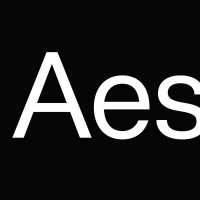The letter S
Comments
-
For me, usually the most time consuming part of designing an “S” (as with other glyphs), is a process of stepwise refinement, a tweaking again and again. I keep the steps, so I can revisit them if needed. The image below is an example of a part of such tweaking. (In this example, I coordinated the terminals of the “S” with the terminals of the “C”.)
 2
2 -
I've found it helpful to work through characters such as /a, /g, /s soon after, or in parallel with /H, /O, /n, /o in both extremes before proceeding.
I use straight segment spines now, which I feel offer more control in my experience. The segment can be really short or relatively long, and the sides don't have to be completely parallel, depending on the type style, allowing subtle tapering.
Interpolates well even between great extremes. You can interpolate between a tapering short segment in black weights, with a longer, completely parallel segment in Hairline or Thin (with a regular weight master in-between).
Even in black weights I've found if the segment is really short and tapered it will not disrupt the curvaceousness of the form and you can visually match the same glyph without a straight segment.2 -
I do the opposite of Frode’s approach. I leave off the nodes from the spine entirely, and do all my spine manipulation with the nodes on the vertical parts of the top and bottom bowls, until very late in the game. I find this gets me much more usable spine shapes.3
Categories
- All Categories
- 46 Introductions
- 3.9K Typeface Design
- 486 Type Design Critiques
- 563 Type Design Software
- 1.1K Type Design Technique & Theory
- 655 Type Business
- 859 Font Technology
- 29 Punchcutting
- 520 Typography
- 119 Type Education
- 324 Type History
- 77 Type Resources
- 112 Lettering and Calligraphy
- 33 Lettering Critiques
- 79 Lettering Technique & Theory
- 557 Announcements
- 94 Events
- 114 Job Postings
- 170 Type Releases
- 178 Miscellaneous News
- 276 About TypeDrawers
- 54 TypeDrawers Announcements
- 120 Suggestions and Bug Reports


